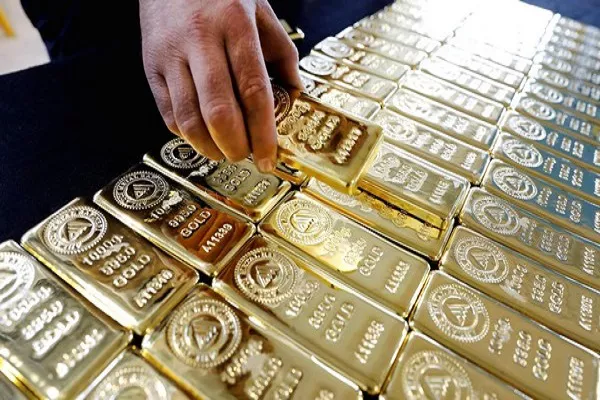In times of economic uncertainty, investors often seek refuge in assets that are considered safe havens. Among these, gold stands out as a traditional store of value, known for its ability to retain purchasing power over time. On the other hand, the stock market is often seen as a barometer of economic health, with prices reflecting investor confidence and expectations for corporate performance. One common belief is that when stock markets decline, the price of gold tends to rise. But is this relationship as straightforward as it seems? In this article, we will delve into the dynamics between gold and stock markets to explore the factors influencing their relationship.
Understanding the Historical Relationship
Historical Trends
Historically, there has been a perceived inverse relationship between the price movements of gold and stock markets. During times of stock market volatility or economic uncertainty, investors tend to flock towards gold as a safe haven asset, driving its price up. Conversely, when the stock market rallies and investor confidence is high, the demand for gold may decrease, causing its price to fall.
Exceptions and Anomalies
While the inverse relationship between gold and stocks holds true in many instances, there have been periods where this correlation breaks down or reverses. For example, during periods of extreme economic stress, both gold and stocks may decline simultaneously as investors resort to liquidating assets to cover losses or margin calls. Additionally, changes in interest rates, inflation expectations, geopolitical events, and currency movements can all influence the relationship between gold and stock markets.
Factors Influencing the Relationship
Investor Sentiment
Investor sentiment plays a crucial role in driving the relationship between gold and stock markets. During times of uncertainty or pessimism, investors may shift their portfolios towards safer assets like gold, driving up its price. Conversely, during periods of optimism, investors may favor stocks over gold, leading to a decrease in the demand for the precious metal.
Monetary Policy
Monetary policy decisions, particularly those related to interest rates, can significantly impact the relationship between gold and stock markets. Lower interest rates, implemented by central banks to stimulate economic growth, tend to make gold more attractive as it offers no yield but becomes relatively more appealing compared to interest-bearing assets. Conversely, higher interest rates can diminish the appeal of gold relative to interest-bearing investments, potentially leading to a decline in its price.
Inflation Expectations
Inflation expectations also play a crucial role in influencing the relationship between gold and stock markets. Gold is often viewed as a hedge against inflation, as its value tends to preserve over time regardless of changes in the purchasing power of fiat currencies. Therefore, when inflationary pressures rise, investors may allocate more capital towards gold as a means of preserving wealth, leading to an increase in its price.
Geopolitical Uncertainty
Geopolitical events, such as conflicts, trade disputes, or political instability, can inject uncertainty into financial markets and drive investors towards safe haven assets like gold. During times of geopolitical turmoil, the demand for gold tends to increase, causing its price to rise. Conversely, periods of geopolitical stability may lead investors to allocate more capital towards riskier assets like stocks, potentially causing the price of gold to decline.
Analyzing Recent Trends
Recent Market Volatility
The COVID-19 pandemic and its economic repercussions have provided a recent example of the relationship between gold and stock markets during times of extreme volatility. In the early stages of the pandemic, as stock markets plummeted and economic uncertainty soared, the price of gold experienced a significant rally, reaching record highs as investors sought refuge from the turmoil in traditional safe haven assets.
Federal Reserve Policy
The response of central banks, particularly the Federal Reserve, to the economic impact of the pandemic has also influenced the relationship between gold and stock markets. The Federal Reserve implemented aggressive monetary stimulus measures, including near-zero interest rates and massive asset purchase programs, to support the economy and stabilize financial markets. These accommodative policies have bolstered the appeal of gold as a hedge against inflation and currency debasement, contributing to its price appreciation.
Inflation Concerns
Rising inflation concerns have further fueled demand for gold as investors seek protection against potential erosion of purchasing power. Stimulus measures, supply chain disruptions, and pent-up consumer demand have contributed to inflationary pressures in many economies, prompting investors to allocate more capital towards inflation-hedging assets like gold.
Geopolitical Tensions
Geopolitical tensions, such as trade disputes between major economies and geopolitical unrest in various regions, have added to global uncertainty and supported demand for gold. Heightened geopolitical risks have led investors to seek out safe haven assets to mitigate potential downside risks, contributing to the resilience of gold prices despite fluctuations in stock markets.
See Also How Many Grams Is A 22 Carat Gold Chain
Conclusion
While the relationship between gold and stock markets is complex and influenced by various factors, including investor sentiment, monetary policy, inflation expectations, and geopolitical events, there is a historical tendency for an inverse relationship between the two during periods of economic uncertainty. However, this relationship is not always consistent, and there are instances where both gold and stocks may move in tandem or diverge due to specific market dynamics.
Understanding the interplay between gold and stock markets can help investors navigate volatile market conditions and construct well-diversified portfolios that balance risk and return objectives. Regardless of short-term fluctuations, gold’s status as a store of value and hedge against various economic and geopolitical risks underscores its enduring appeal to investors seeking to preserve wealth in uncertain times.


